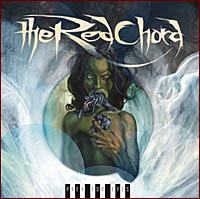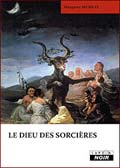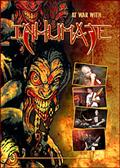#
# XML_node.objet
#
# This object is an XML node representation
#
# /- name (string)
# xml_node --- attributes (array)
# \- children (array) or value (string)
class xml_node {
var $name;
var $attributes = array();
var $children = array();
var $value = "";
function xml_node($name,$attributes,$children=array(),$value="") {
$this->name = $name;
if (is_array($attributes)) {
$this->attributes = $attributes;
}
$this->children = $children;
$this->value = $value;
}
}
#
# xml_tree class
#
# This object parses an XML stream and offers a tree composed by xml_nodes
#
class xml_tree {
var $xml_stream;
var $current_node;
var $root_node;
var $index;
var $value;
function xml_tree() {
$this->root_node = new xml_node("__ROOT_NODE",array());
$this->current_node = $this->root_node;
}
function add_tree($xml_stream) {
# Managing the parser
$this->xml_stream = $xml_stream;
$xml_parser = xml_parser_create();
xml_parser_set_option($xml_parser,XML_OPTION_CASE_FOLDING,0);
xml_parser_set_option($xml_parser,XML_OPTION_SKIP_WHITE,1);
if (!xml_parse_into_struct($xml_parser,$this->xml_stream,$this->value,$this->index)) {
xml_parser_free($xml_parser);
die("XML Parse error");
}
xml_parser_free($xml_parser);
# Now, $this->value and $this->index are informed, we can use the get_node methode.
$tab_result = $this->get_node(0,count($this->value) - 1);
$this->root_node->children[] = $tab_result[0];
$this->current_node = $this->root_node;
}
function get_node($index_start,$index_stop) {
#echo "
\n";
#echo "GET-NODE($index_start,$index_stop)
\n";
# What we are going to return is an array of xml_nodes
$return_tab = array();
# depth is only here to check if everything is all right
$tab_node = $this->value[$index_start];
$depth = $tab_node["level"]-1;
# Now we have to be sure we do not forget a single node
for ($index = $index_start;$index <= $index_stop;$index++) {
#echo "\$index = $index
";
# get the current node
$tab_node = $this->value[$index];
# what type of node is it ?
switch($tab_node["type"]) {
case "complete" :
# Depth integrity check
if ($tab_node["level"] != $depth+1) {
die("ERREUR # contrainte d'intégrité au noeud complet $index, niveau $depth + 1 au lieu de ".$tab_node["level"]);
}
#echo "Noeud complet trouvé position $index TAG ".$tab_node["tag"]."
\n";
# Easy one, no children to manage, only a value...
$return_tab[] = new xml_node($tab_node["tag"],$tab_node["attributes"],"",$tab_node["value"]);
break;
case "open" :
# Depth integrity check
if ($tab_node["level"] != $depth +1 ) {
die("ERREUR # contrainte d'intégrité au noeud ouvert $index, niveau $depth au lieu de ".$tab_node["level"]);
}
# Open tag, we re-use this methode to return its children
# Where is the correspondong close tag ?
$node_index = $this->index[$tab_node["tag"]];
$flipped_node_index = array_flip($node_index);
#echo "This ".$tab_node["tag"]." is at coords ".$flipped_node_index[$index]."
";
$i=1;
do {
$next_index = $node_index[$flipped_node_index[$index] + $i++];
$next_tag=$this->value[$next_index];
}
while ($next_tag["level"]!=$tab_node["level"]);
#echo "Ouverture de noeud détectée pos $index TAG ".$tab_node["tag"]."
\n Parcours jusqu au $next_index
\n";
# good, we can now instanciate our node
$return_tab[] = new xml_node($tab_node["tag"],$tab_node["attributes"],$this->get_node($index+1,$next_index),"");
# As we called the get_node methode, we are sure that nodes have been parsed to the corresponding close tag
$index = $next_index;
break;
case "close" :
# Depth integrity check
if ($tab_node["level"] != $depth ){
die("ERREUR # contrainte d'intégrité au noeud fermé $index, niveau $depth au lieu de ".$tab_node["level"]);
}
#echo "Fermeture de noeud detectée pos $index TAG ".$tab_node["tag"]."
\n";
# This ugly thing is useless because reaching a close tag means that $index==$index_stop but who knows ? =)
# it will be skipped soon
$index = $index_stop;
break;
default:
die("Erreur de type de TAG non déterminé :'".$tab_node["type"]."'");
}
}
# We are out ... returns the array with collected children...
return ($return_tab);
}
# this function browse the xml tree and set the current node to the selected node
function give_node($path) {
if ($path[0]=="/") {
$current_node=$this->root_node;
$path=substr($path,1);
#echo "ABSOLUTE PATH GIVEN=$path
";
}
else {
$current_node = $this->current_node;
}
#echo "PATH GIVEN=$path
";
$tab_path = split("/",$path);
foreach ($tab_path as $node_expr) {
#echo "STUDYING EXPR='$node_expr'
";
$node = $current_node;
$expr_tab = split("\?",$node_expr);
$node_name = $expr_tab[0];
$attr_tab = 0;
if (count($expr_tab)>1) {
##echo "TROUVE AU MOINS UNE CONDITION SUR LES ATTRIBUTS...
";
$attr_expr_tab=split(",",$expr_tab[1]);
$attr_tab=array();
foreach($attr_expr_tab as $attr_expr) {
$attr_split_expr=split("=",$attr_expr);
$attr_tab[$attr_split_expr[0]]=$attr_split_expr[1];
}
}
$last=0;
foreach ($node->children as $children) {
#echo "COMPARING WITH '$children->name'
";
if ($children->name == $node_name) {
##echo "TROUVE NOEUD CORRESPONDANT $node_name
";
if (is_array($attr_tab)) {
$node_attributes = $children->attributes;
foreach ($attr_tab as $key=>$value) {
if ($node_attributes[$key] == $value) {
#echo "ATTRIBUTE & CHANGE CURRENT NODE TO ".$children->name."
";
$current_node = $children;
$last = 1;
}
}
}
else {
##echo "CHILD=".$children->name."
";
#echo "CHANGE CURRENT NODE TO ".$children->name."
";
$current_node = $children;
$last=1;
}
}
if ($last) {
break;
}
}
if (!$last) {
#echo "PATH ERROR $node_name
";
#die("MMmmmh It seems that this file is not a DIA XML format...sorry...");
return 0;
}
}
return $current_node;
}
function browse_tree($path) {
$node = $this->give_node($path);
if (is_object($node)) {
$this->current_node = $node;
return 1;
}
return 0;
}
# this method dumps an html representation of the xml tree
function xml_show($node = "",$level=0,$last=0) {
if ($node=="") {
$node=$this->root_node;
}
if (!is_object($node)) {
die("ERROR : node is not an object");
}
$line="";
for($i=1;$i<=$level;$i++) {
if ((i==$level-1) and ($last)) {
$line.=" ";
}
else {
$line.=" |";
}
if ($i==$level) {
$line.="`-";
}
}
$line.=$node->name;
#echo $line;
$line.="".count($node->children)."";
if (count($node->children)==1) {
$line.=" (".$node->value.")
\n";
echo "$line";
}
else {
$line.="
\n";
echo "$line";
$i=1;
foreach($node->children as $children) {
if ($i==count($node->children)) {
$this->xml_show($children,$level+1,1);
}
else {
$this->xml_show($children,$level+1);
}
$i++;
}
}
}
#END_CLASS
}
THE RED CHORD (usa) - Prey For Eyes (2007)

Label : Metal Blade / Nocturne
Sortie du Scud : 23 juillet 2007
Pays : Etats Unis
Genre : Death Metal / Hardcore
Type : Album
Playtime : 14 Titres - 45 Mins
Si cela n’avait pas déjà été pris par un glandu numérique à qui on aimerait donner des baffes pendant qu’il chante « t’es cap, pas cap », THE RED CHORD aurait pu s’appeler PINOCCHIO. Tout simplement parce que sa musique est tout aussi désarticulée qu’une marionnette et qu’on s’emmêle rapidement les ficelles si on n’y prend pas garde. On aurait pu aussi les nommer DISMEMBER… mais ça aussi, c’est déjà pris. La brutalité directe et sans fioritures que leur musique dégage fait penser que les membres s’offrent en studio des morceaux de barbaque bien sanguinolente en guise d’apéritif pour se donner du cœur à l’ouvrage. Bon, finalement, ils ont gardé THE RED CHORD comme nom.
« Film Critiques and Militia Men » met tout de suite les points sur les « i ». Avec à peine plus d’une minute pour ce morceau, qui n’est pas une introduction instrumentale, on s’en prend plein la gueule et on ne peut qu’attendre que la déferlante soit passée pour reprendre son souffle et des forces. Seulement, derrière un tel déchainement de brutalité, on a du mal à se raccrocher à un quelconque filet musical. C’est violent, bruyant, mais c’est à peu près tout. Les morceaux suivants varient plus et on ne se prend pas uniquement de blast beat dans les dents pendant toute la longueur des morceaux, même s’ils sont encore bien présents. Par contre, on se prend des changements rythmiques assez régulièrement. J’aime en général bien les morceaux à structure complexe, mais là, on a l’impression que quelqu’un s’est dit « tiens, et si je changeais de riff là tout de suite », que les autres ont entendus et se sont mis à le suivre, faute de pouvoir le faire rentrer dans le droit chemin. C’est souvent chaotique et sans cohérence pour que cela soit agréable. Pourtant, THE RED CHORD sait aussi faire de la musique audible. Quand ils sont en mid tempo, cela passe beaucoup mieux. On entend ce qu’il se passe et tout n’est pas forcément masqué par la voix beaucoup trop présente. Et c’est sans compter sur la double grosse caisse qui atteint des volumes insupportables, si bien qu’on n’entend parfois que difficilement la caisse claire ! Là où j’ai vraiment bien aimé le groupe, c’est sur l’instrumentale « It Came from Over There » de toute beauté. Ou bien aussi sur les fins de « Prey for Eyes » ou « Seminar » qui démontre que les membres du groupe savent aussi composer des mélodies et pas simplement aligner des rythmiques sans queue ni tête histoire de défouler les métalleux en mal de défouloir brutal. OK, cela sort de ce que fait le groupe habituellement, mais ils sont vraiment bons dans ce domaine.
Finalement, c’est surtout de la cohérence et de la musicalité qui m’a le plus manqué sur cet album. Faire de la musique brutale juste pour être brutal, je vois mal l’intérêt…
Ajouté : Vendredi 01 Février 2008
Chroniqueur : Wong Li
Score :   
Lien en relation: The Red Chord Website
Hits: 10969
|














